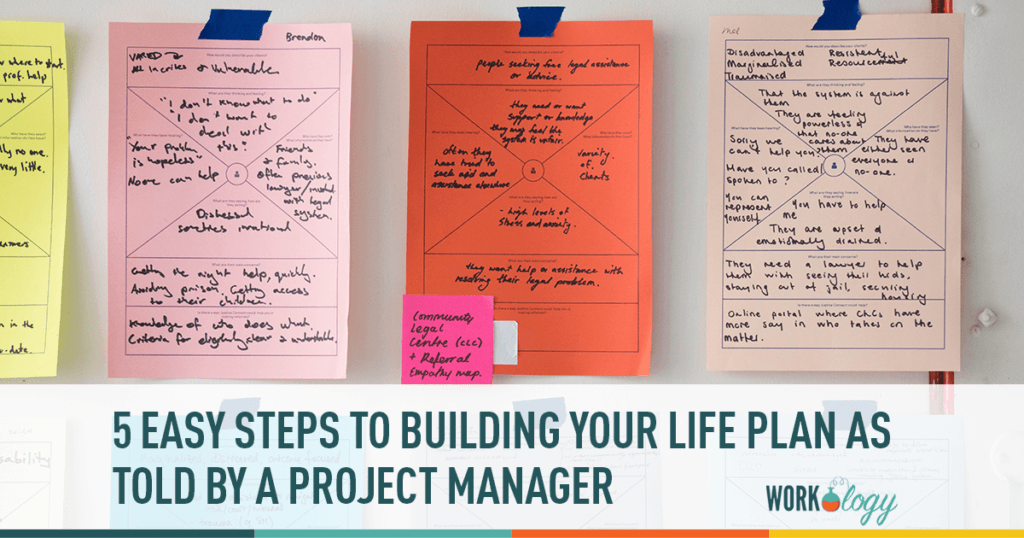Your life is a project. This is true both metaphorically and technically. Your life has a defined beginning and end. You have a scope, schedule, and budget unique to you. And if you do it right, you should leave satisfied that you’ve contributed something special.
So who better than a neurotic, contingency-obsessed, ulcer-plagued Project Manager to be your spirit guide?
1. First, you’ll need a charter.
A charter is a little one-page document that defines the purpose and scope of a project. Technically, work on a project can’t begin until this is done. But we’ll make an exception in this case, because defining your life purpose simply can’t be rushed.
Now. We’ll need to make some assumptions about your life expectancy, rate of skill acquisition, and general level of good fortune. These are beyond your realm of control, so we’ll use some analogous estimating to get close to accurate figures. For example, the average life expectancy of an American is 78 years. If everyone in your family has lived past 90, pad the estimate….but be warned, you do so against the advice of every project manager ever.
Next, it’s time to define your life’s scope. Write down all the things you realistically hope to accomplish in 78 years. Then, perform the demoralizing exercise of defining “out of scope” items. These are the things you’ll probably never do. For example, “Colonize Jupiter.” (Damn!)
Finally, wrap things up by documenting your stakeholders. Stakeholders, as any PMP will tell you, are “anyone who will suffer if your project goes FUBAR.”
2. Build Your Risk Register.
This is a comprehensive list of everything that might (but isn’t certain) to go wrong on your project, paired with your plan to avoid or mitigate the risk. For example:
Risk: I could fall on a fork. Likelihood (1 to 10): 1 Impact (1 to 10): 7
Risk Avoidance Plan: Use chopsticks.
3. Define Roles and Responsibilities.
Ah, the RACI Matrix. My favorite of all the matrices. If everyone had one, we’d all stop going to therapy.
This chart shows who must do what. Each of your life’s tasks have many people involved…the question is: how involved? For each person involved in a life task, assign a role: R, A, C, or I.
“R” stands for “Responsible.” This is the person or persons who are will actually perform a task. For example, your dentist is “responsible” for your oral hygiene.
“A” stands for “Accountable,” or the person who is ultimately answerable for the task getting done. That would be you.
“C” stands for “Consulted” and encompasses all the people whose advice you want while completing a task. (Example: Your BFF)
“I” stands for Informed. This is is the list of people who you want to inform about a task, but do not want to consult during the decision-making process. (Example, In-Laws.)
4. Decide on a Methodology.
Right now, there are two primary approaches to Project Management: Waterfall and Agile. A waterfall schedule has tasks taking place in sequence, planned from the beginning to end of the project. Someone with a waterfall approach to life has a detailed life plan spanning several decades. For example: “college graduation by 22, married by 27, first kid by 28, second kid by 32, hit career peak at 42, leave private sector and run for political office at 45, etc.”
Most of us need a more iterative approach, which accounts for the long life of your project (no pun intended) and the fact that life is so ridiculously unpredictable. That’s where Agile comes in. With most agile methodologies, you plan and execute a small scope over a short period of time (a month, for example), then regroup and plan the next packet of work.
5. Periodically Assess Your Status.
Your boss has a word for this. It’s called a “performance review.” A PM’s status report template is like a knight’s horse…he or she perfects it over time, religiously defends its value to other PMs, and shows it off at every opportunity. That said, for those who don’t get perverse joy out of template creation, here is one to use. Fill one out as often as you need in order to make sure you’re on track with your goals.
6. BONUS
Realize that Project Managers are neurotic, contingency-obsessed, and ulcer-plagued. Their self-help advice should be filtered accordingly.
Are you ready to start planning?









